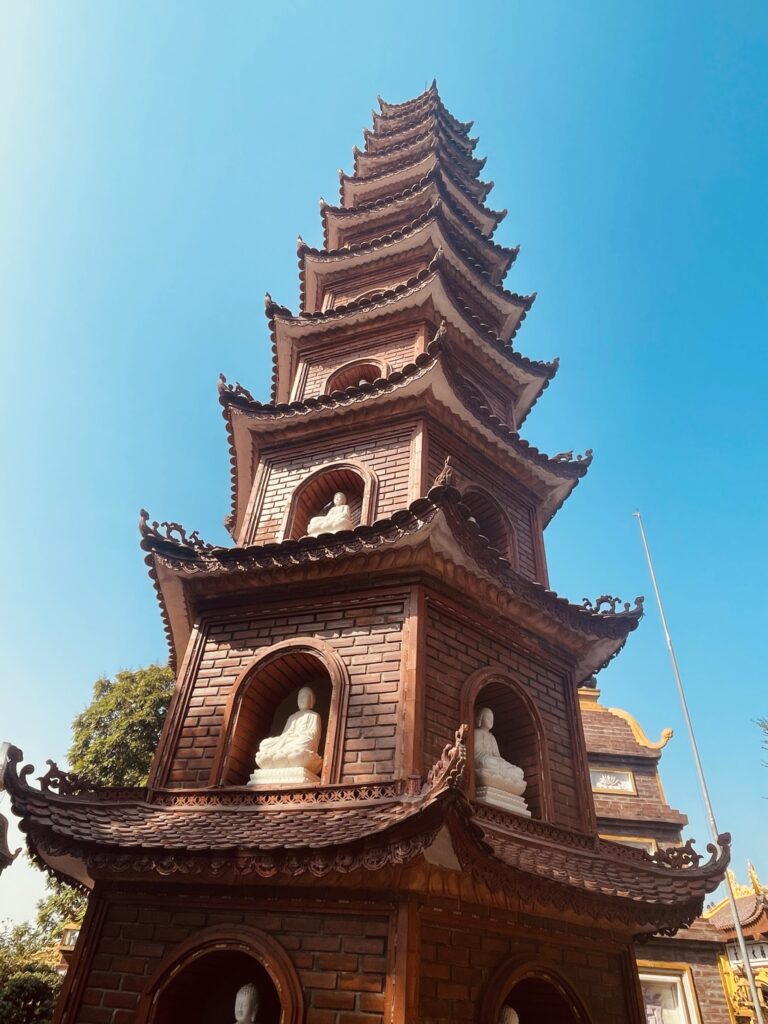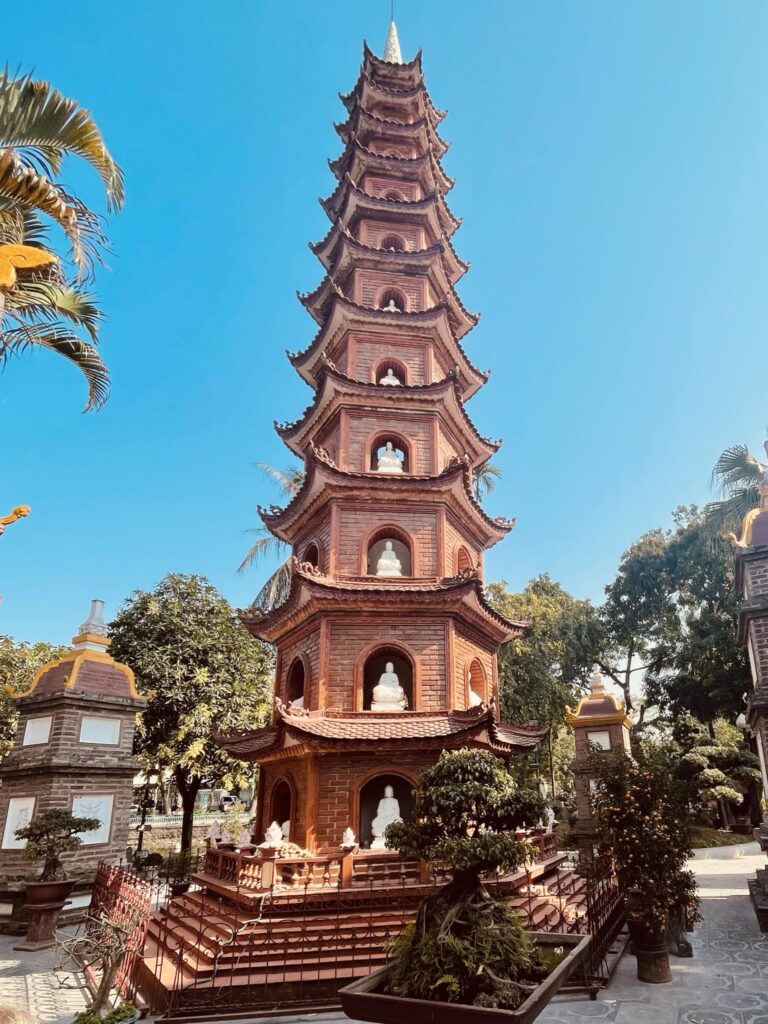Tran Quoc Pogoda and Quan Thanh Temple
Immersed in Hanoi’s enchanting streets, we explored two splendid pagodas around West Lake, captivated by their timeless allure. Tran Quoc Pagoda, the city’s oldest, moved to the shores of West Lake due to flooding threats, while the second temple nestled amid the lake’s lush landscapes. Both temples exuded spiritual essence, leaving us humbled by their grandeur and rich history. The day among these ancient pagodas was a profound reminder of Hanoi’s enduring heritage, a tapestry of mysticism and serenity.






Quan Thanh temple means Place of the Gods. It dates back to the 11th century, the temple is dedicated to Xuan Wu. This temple is also located near West Lake.




Temple of Literature
We had the opportunity to visit the Temple of Literature, and it was a fascinating experience. This temple, which is almost a thousand years old, was founded in 1070 by Emperor Ly Thanh Tong to worship the Chinese philosopher Confucius. It was amazing to learn about the rich history and cultural significance of this temple.
As we entered the temple, we were greeted by small brick walls and several courtyards that led us through a serene and peaceful environment. We were struck by the beauty of the lotus flowers blooming on the lily pads, and we stopped to admire their vibrant colors.
Finally, we reached the great middle gate, which was a breathtaking sight. On either side of the gate, there were the Virtue and Talent Gates, which added to the grandeur of the temple. Overall, it was a memorable experience, and we would highly recommend visiting the Temple of Literature to anyone who is interested in history, culture, and architecture.








During our visit to the Temple of Literature, we discovered that there were three rounds of exams required to become a government official. If you didn’t pass all three parts of the exams, you had to wait three years and try again. The three parts were the Regional exam, National exam, and Royal exam, and it was fascinating to learn about the rigorous process of becoming an official in ancient Vietnam.
As we walked further into the temple, we arrived at the third courtyard, which had a square shape and was known as the Well of Heavenly Clarity. This area was peaceful and serene, and we felt a sense of calmness as we took in our surroundings.
Moving on to the fourth courtyard, we passed through the Gate to Great Success, where we found the House of Ceremonies and the sanctuary to Confucius. It was incredible to witness the grandeur and intricate architecture of this sacred place.
The fifth courtyard was particularly special, as it had two floors. On the ground floor, there was a statue of Chu Văn An, a renowned teacher who dedicated his life to Vietnamese education. On the upper floor, people worshiped the three kings. It was a unique experience to learn about the cultural significance of each floor.
Lastly, we had the pleasure of meeting two lovely girls who wanted to practice their English with us. It was a delightful opportunity to make new friends and learn more about the history and culture of Vietnam. Overall, our visit to the Temple of Literature was a memorable and enriching experience that we would highly recommend to anyone visiting Hanoi.




